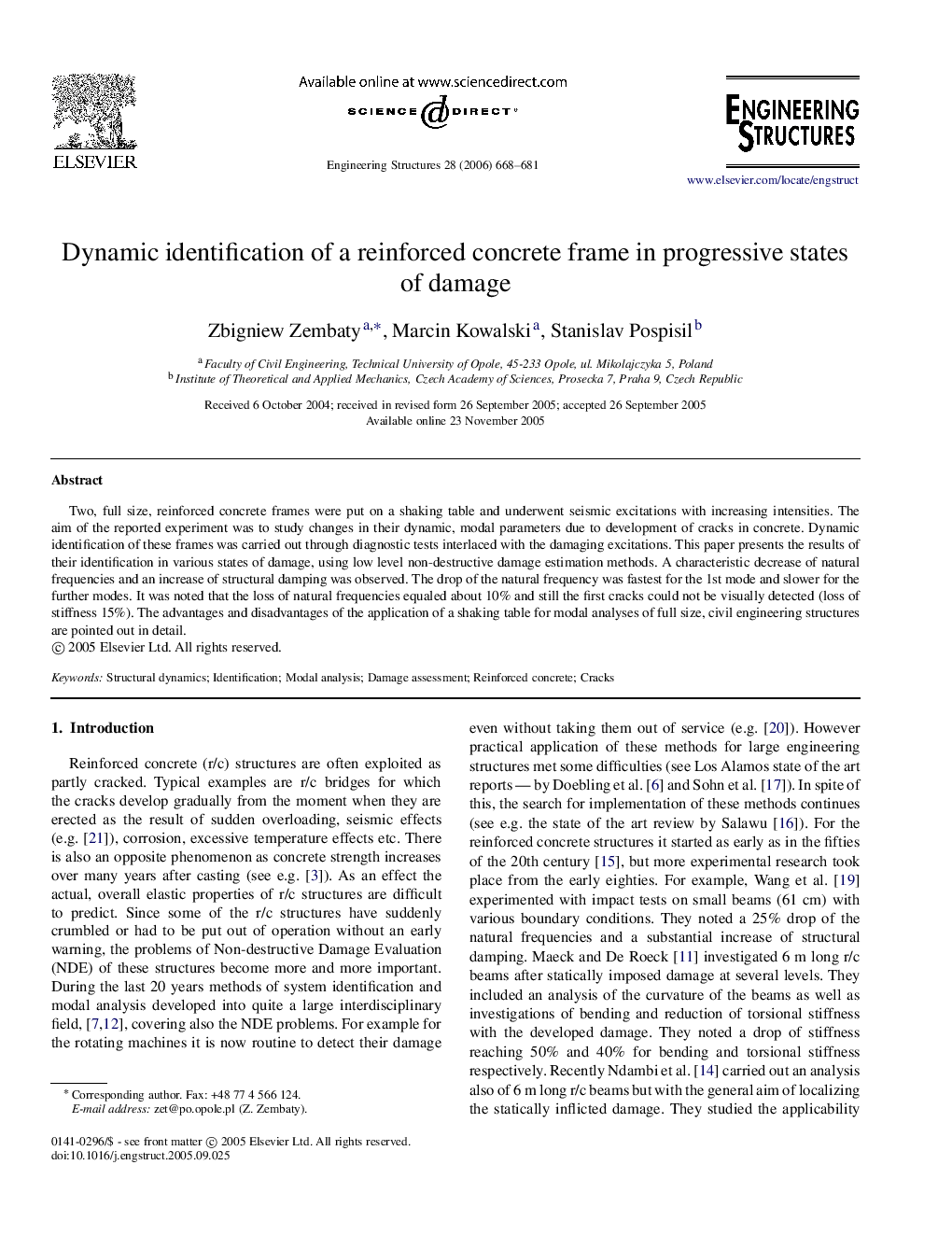| Article ID | Journal | Published Year | Pages | File Type |
|---|---|---|---|---|
| 269601 | Engineering Structures | 2006 | 14 Pages |
Two, full size, reinforced concrete frames were put on a shaking table and underwent seismic excitations with increasing intensities. The aim of the reported experiment was to study changes in their dynamic, modal parameters due to development of cracks in concrete. Dynamic identification of these frames was carried out through diagnostic tests interlaced with the damaging excitations. This paper presents the results of their identification in various states of damage, using low level non-destructive damage estimation methods. A characteristic decrease of natural frequencies and an increase of structural damping was observed. The drop of the natural frequency was fastest for the 1st mode and slower for the further modes. It was noted that the loss of natural frequencies equaled about 10% and still the first cracks could not be visually detected (loss of stiffness 15%). The advantages and disadvantages of the application of a shaking table for modal analyses of full size, civil engineering structures are pointed out in detail.
